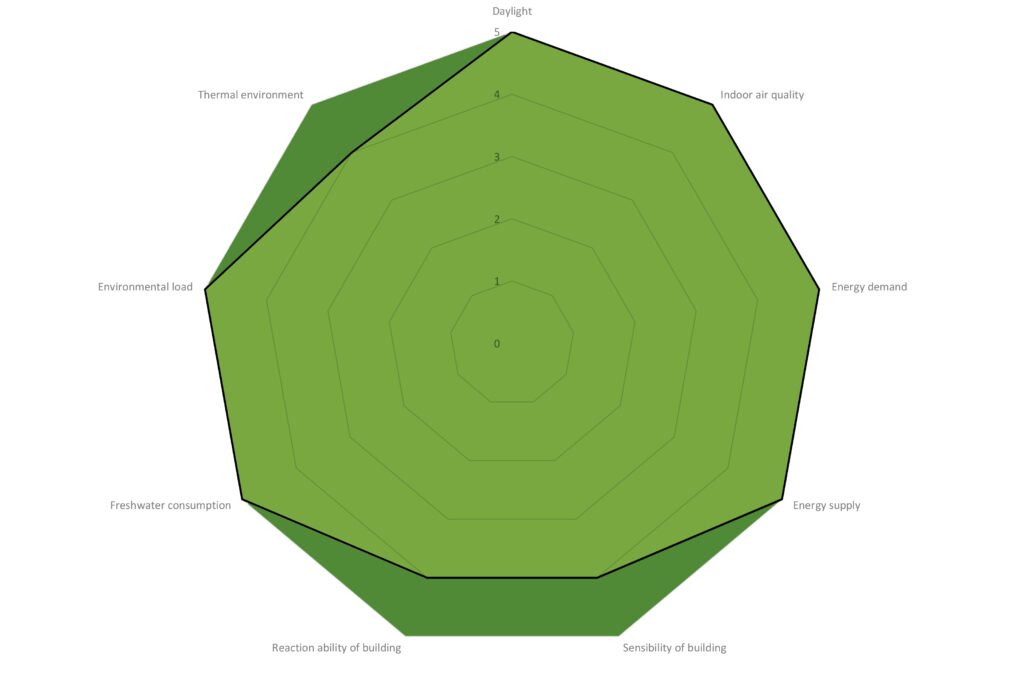038 The Steppe Ark
Address of the project: Desheng Village, Zhangbei County, Zhangjiakou City, Hebei Province, China
Owner/investor –
Architect: Solar Decathlon China 2021 – The THUSDC2021 student team from the School of Architecture, Tsinghua University
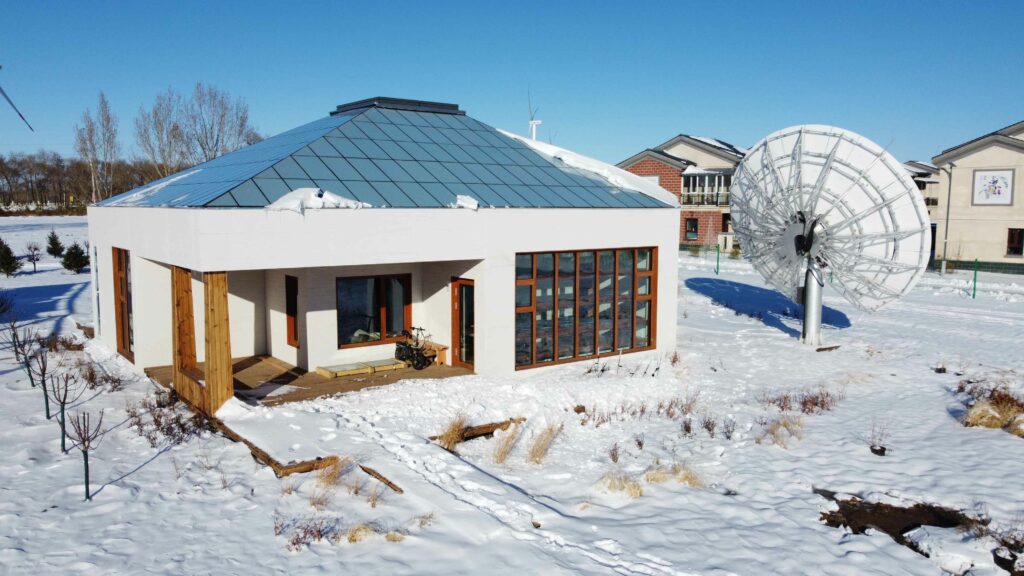
The Steppe Ark is a typical energy efficient solar residence of 146 square metres in the severe cold zone of China. It has the typical characteristics of an Active House with a high level of comfort.
Daylight: The Steppe Ark, a NZEB residence, utilises as much natural light as possible to create a healthy indoor environment and reduce the lighting energy consumption of the building. High-performance window and door solutions are integrated into the façade windows, skylights and a multi-functional composite wall, combined with intelligent control technology to maximise the benefits of an active house. The multifunctional facade also features an optimised design of reflective panels to increase the amount of light in the room and maximise solar gain. The reflective panels are calculated by the grasshopper-honeybee and wallacei X genetic algorithms to achieve the best possible reflectivity at different orientations and heights, bringing in as much natural light as possible but avoiding glare.
Thermal comfort: For heating and cooling, the building employs a semi-centralised system for the control of indoor thermal comfort, which has a number of advantages, such as the possibility of regulating the temperature by zones and the appropriate introduction of fresh air. Stirling, a cogeneration system, is used in the building – The Steppe Ark utilizes the waste heat generated by stirling in winter to provide radiant heating via underfloor pipes. The high comfort and high thermal stability improves the thermal comfort of indoor spaces.
Ventilation: The Stepper Ark employs a high performance window and door system that allows the use of natural air in accordance with the principle of thermal pressure ventilation through façade windows, intelligent skylights and ventilation openers in multifunctional facade. The airflow through the openings of the walls and up to the skylights is highly efficient, allowing for rapid cooling in case of indoor high temperatures.
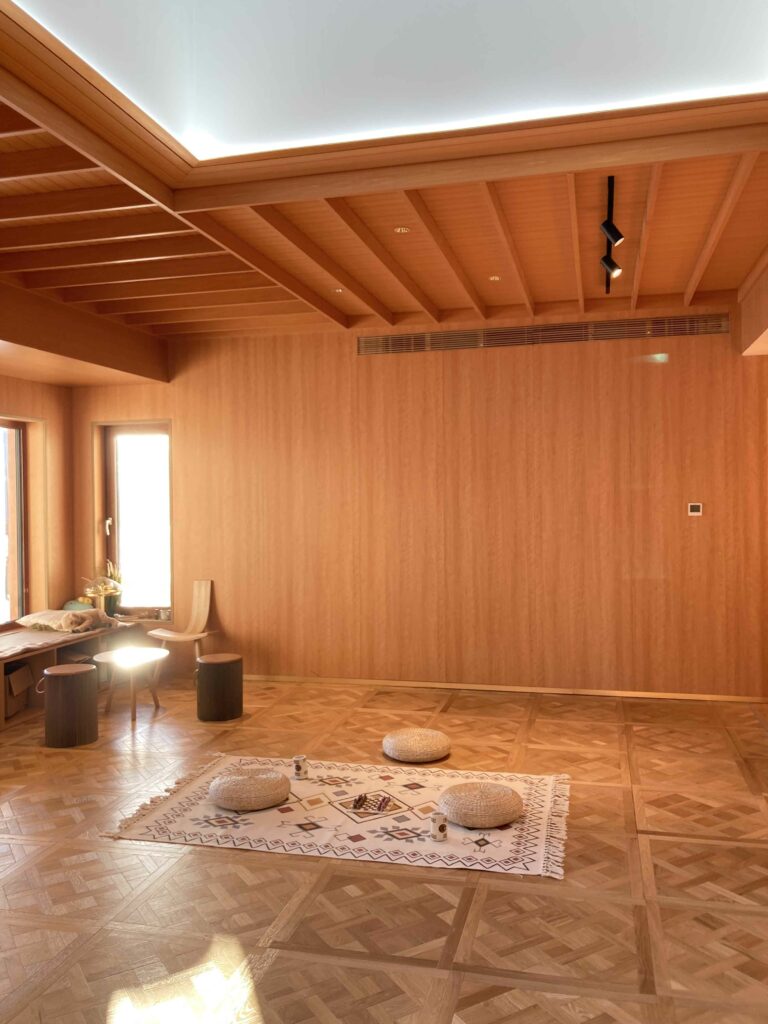
In the backdrop of deteriorating global environment, reducing energy consumption of building operation and maintenance has become one of the important ways to alleviate environmental problems. In order to ensure the sustainable development of steppe ecology, The Steppe Ark focuses on the transformation and utilization of solar energy, and tries to put forward a technical path for the application of an ecologically sustainable zero-energy housing system in cold regions, proposing and validating three types of technology strategies: integrated design of space based on function and performance, high performance passive technology and efficient active technology. In addition, The Steppe Ark has been able to rationalise the building’s energy demand through active building operation strategies
The viability of the technical system is guaranteed by the climatic characteristics of the building site – The Steppe Ark, as an energy-efficient building, is located in Zhangjiakou, Hebei Province, at the border between Beijing, Hebei, Shanxi and Mongolia, and the building’s climate zone is the severe cold zone of China. At the mean time, because of Zhangbei being pastoral living areas, in order to expand the application of architecture technology systems, the technology was further evaluated and applied to the regional background and culture of Inner Mongolia. Inner Mongolia has high altitude, great temperature difference between day and night, sufficient duration of sunshine, and sparse precipitation in most areas. The total amount of solar radiation per square meter area received per year is between 5,852 and 6,680MJ, which indicates that Inner Mongolia belongs to a potential region with abundant solar energy resources – this is where The Steppe Ark has the opportunity to achieve its goal of nearly zero energy building.
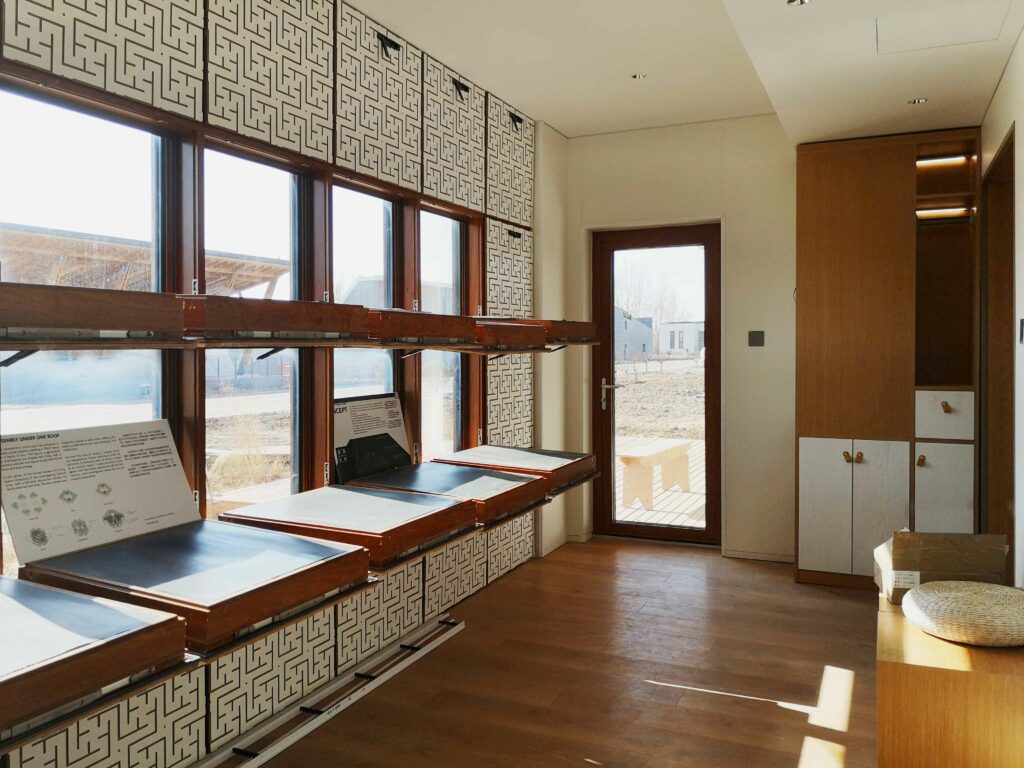
In terms of environmental protection, The Steppe Ark adopts the following four ways to recycle resources and reduce the damage of the building to the site environment as much as possible.
(1) Rainwater collection and filtration: The roof rainwater is collected through the roof gutter, and imported into the planting pool, and the pollutants in the rainwater are filtered by the soil. The filtered rainwater flows into a rainwater collection tank and is stored for irrigation use during droughts.
(2) Composting of livestock manure: The secondary utilization process of manure is completed through centralized transportation of manure and secondary fermentation through adjusting water, which can effectively reduce the negative impact of direct combustion of biomass energy on climate and indoor environment and realize the sustainable utilization of biomass energy.
(3) Family farm: The sunroom in the southwest corner can be used as a family farm. From summer to winter, the building form can be changed according to the climate, and it is responsible for vegetable planting, gardening participation, selling characteristic plants and other functions. The recycled water can be used for plant irrigation, making the vegetable production process more environmentally friendly.
(4) Light intervention on site: The Steppe Ark adopts lightweight assembly structure, which has the advantages of easy disassembly, carrying and rapid assembly of building materials. It can effectively reduce the damage to the grassland ecological environment before and after construction and demolition, and realize the “light intervention” and “zero damage” of the building structure on the site.
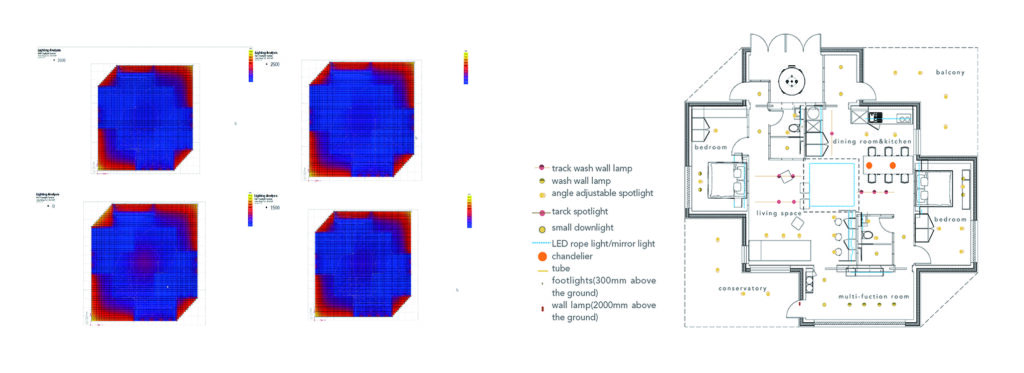
RADAR
